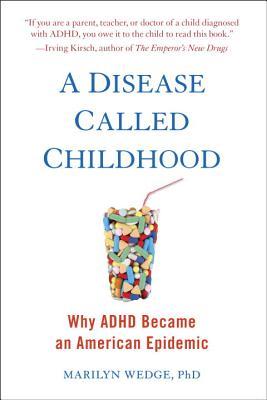
Book
A Disease Called Childhood: Why ADHD Became an American Epidemic
(Write a Review)
Paperback
$24.00
Since 1987, the number of American children diagnosed with ADHD has jumped from 3 to 11 percent. Meanwhile, ADHD rates remain relatively low in other countries such as France, Finland, the UK, and Japan, where the number of children diagnosed with and medicated for ADHD is 1 percent or less. Alarmed by this trend, family therapist Marilyn Wedge set out to understand how ADHD became an American epidemic--and to find out whether there are alternative treatments to powerful prescription drugs. In A Disease Called Childhood, Wedge examines the factors that have created a generation addicted to stimulant drugs. Instead of focusing only on treating symptoms, she looks at the various potential causes of hyperactivity and inattention in children, and behavioral and environmental--as opposed to strictly biological--treatments that have been proven to help. In the process, Wedge offers a new paradigm for child mental health--and a better, happier, and less medicated future for American children.
Since 1987, the number of American children diagnosed with ADHD has jumped from 3 to 11 percent. Meanwhile, ADHD rates remain relatively low in other countries such as France, Finland, the UK, and Japan, where the number of children diagnosed with and medicated for ADHD is 1 percent or less. Alarmed by this trend, family therapist Marilyn Wedge set out to understand how ADHD became an American epidemic--and to find out whether there are alternative treatments to powerful prescription drugs. In A Disease Called Childhood, Wedge examines the factors that have created a generation addicted to stimulant drugs. Instead of focusing only on treating symptoms, she looks at the various potential causes of hyperactivity and inattention in children, and behavioral and environmental--as opposed to strictly biological--treatments that have been proven to help. In the process, Wedge offers a new paradigm for child mental health--and a better, happier, and less medicated future for American children.
Paperback
$24.00